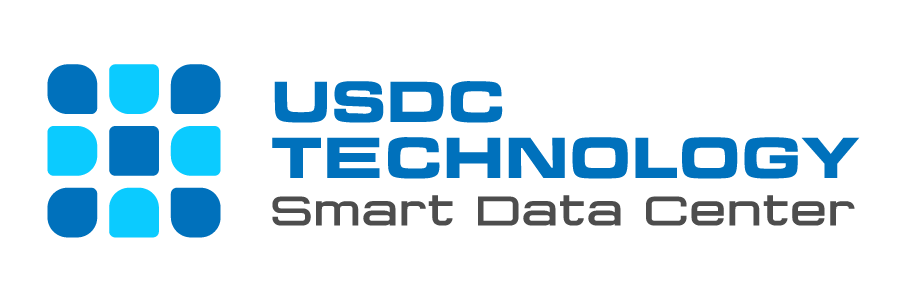As remote office, online education, and live broadcasting are becoming increasingly popular, we are in era of digitalization and it is gaining momentum in various industries. Digital transformation in various industries is in the fast track mode. Data centers are the foundation of digital transformation which are meeting the new opportunities for development.
In the new era, opportunities and challenges will coexist. Only by gaining deep insight into future trends, we can lead the future effectively. The trends and future opportunities will be discussed in following topic – “Top 10 Trends of Data Center Facilities”.
Trend 1: Zero Carbon DC
Carbon neutrality has become the most urgent mission in the world, triggering a green revolution. Green power, such as wind energy and solar energy, will be more widely used in data centers. It is an inevitable trend to maximize resource saving (such as energy saving, footprint saving, water saving, and material saving) in the entire life cycle of data centers. In the large data center facility, thermal energy recovery is a new energy-saving solution. Data center PUE will enter the 1.0x Era, and “zero carbon” DCs will be a reality in near future.
Trend 2: High Density
In the next five years, IT devices will continue to evolve to high computing power and density, and the CPU and server power will continue to increase. In addition, as the demand for AI applications grows, AI computing power will increase. To balance efficiency and cost, data centers will develop to high density. It is estimated that by 2025, diversified computing power collaboration will become the mainstream, and mainstream cloud data centers will form a hybrid deployment of 15–30 kW/cabinet.
Trend 3: Scalable
The lifecycle of IT equipment is generally 3 to 5 years, and the power density is roughly doubled every 5 years. The lifecycle of data center infrastructure is 10 to 15 years. The infrastructure must support elastic architecture and phased investment, and meet the power evolution requirements of two to three generations of IT devices with the optimal CAPEX. In addition, the data center must be flexible to support the hybrid deployment of IT devices with different power densities, achieving on-demand capacity expansion scalability and space-saving.
Trend 4: Fast Deployment
While Internet services have a rapid outbreaks in a short period of time, rapid deployment becomes essential In addition, data centers need to shift from support systems to production systems to meet the diverse application requirements of the cloud and need to be rolled out as quickly as clouds. In the future, the data center TTM will be reduced from 9 to 12 months to 6 months or even 3 months.
Trend 5: Simple Architecture
To address the disadvantages of slow construction of traditional data centers and high initial investment costs, simplified system-level and data center-level architectures will become the mainstream. The DC power supply and cooling architecture evolves from the traditional architecture to integrated link-level converged products. With the prefabricated and modular design, the data center features fast deployment, elastic capacity expansion, simple O&M, and efficient energy saving.
Trend 6: Lithium for All
Traditional data center power supply systems have issues such as complexity, high footprint, frequent accidents such as fire breakout, and difficult maintenance. With the trend of lithium for all, we are reshaping the traditional batteries with lithium-based batteries in lead-acid-based batteries phase-out. Eventually, with the decreasing cost of lithium batteries, data centers will be all lithium-based. Compared with traditional lead-acid batteries, lithium batteries have twice the life span, occupy 1/3 footprint, and have enhanced visibility. Additionally, with three-level BMS and LFP material lithium batteries ensures high security and reliability.
Trend 7: Air In and Water Out
Driven by complex O&M and higher PUE and aligning with carbon neutrality goals, traditional chilled water systems will be replaced. In addition, cooling systems with less or no water will become the mainstream. The modular Indirect Evaporative Cooling system adopts an integrated product design, which shortens deployment time and simplifies O&M, while fully utilizing natural cooling resources, it greatly reduces the power consumption of the cooling system.
Trend 8: Fully Digitalized
With the increasing digital transformation, digital, communications, and AI technologies are increasingly applied. Digital twin technologies will become more widely used throughout the lifecycle of the data center from planning, construction, maintenance, and optimization, making All-DC visible, manageable, and controllable, delivering an excellent full-lifecycle experience.
Trend 9: AI-Enabled
With the continuous improvement and widespread application of IoT and AI technologies, data centers will gradually replace manual operations such as repetitive work, expert experience, and business decision-making with AI-based autonomous driving. Data centers will gradually evolve from single-domain intelligence such as O&M, energy saving, and operation to full-lifecycle digitalization and autonomous driving, including planning, construction, O&M, and optimization, AI energy efficiency optimization and real-time parameter adjustment; AI O&M, 24/7 non-stop inspection, and predictive maintenance; AI operation, online simulation, and automatic service design.
Trend 10: Secure and Reliable
As data center infrastructures become more intelligent, network security threats are multiplied. The data center must implement system-level, component-level, and device-level predictive maintenance. The data center must have six features: hardware reliability, software security, system resilience, security, privacy, and always online availability. Hierarchical defense ensures data center security and trustworthiness.
About USDC Technology
Universal Smart Data Center Technology was established by people with a broad vision of Information and Communication Technology. They are a professional and leading company in technology construction for Smart Data Center services in Vietnam and the region. Its commitment to take total ownership of projects has resulted in an enviable client portfolio, featuring some of the most renowned brands. Its mission to deliver society the most optimal products and services by applying the latest technologies.
USDC Technology Data Center
Launched on December, 2020, USDC Technology Data Center was built on class Tier III. Located on Sai Gon Hitech Park, District 9, Ho Chi Minh City, Vietnam (so called Vietnam’s Silicon Valley). The data center is available connection with all large networks, locate in strategic site to cover the East of Ho Chi Minh city. Our world-class data centers provide full-scale services. At USDC Technology, nothing is of greater importance to us than keeping your applications online and your data secure.
News Contact:
Universal Smart Data Center Technology
Phone: (+84) 28 73080708
Email: info@usdc.vn


